Do you feel bonita? Tatiana Trouvé at Palazzo Grassi
What's at the bottom of all the bling bling?
Looks good in here… too good…
This is the first time I came across Tatiana’s (Gen X, French-Italian) work, and frankly, I don’t know how I feel about it… According to the exhibition website, this is her first “major” show in Italy and her biggest ever. Works from the last decade come together with new sculptures, large-scale drawings, and site-specific installations inspired by Palazzo Grassi. Let’s see what that’s about.
Once inside, I’m standing in front of and a few moments later on top of Hors-sol (2025), an asphalt installation filling out the floor of the atrium. Ngl, that was quite a first impression. Golden, silver, and rosé manhole covers fill spots in between. Looks like jewelry. Metal plates for utilities, scrunched pressed plastic bottles, shoppers, and trash bags dipped in silver look so stylish suddenly. They almost resemble meticulous pencil drawings. The corresponding article states that Tatiana imitated drain covers she found “in cities around the world including Paris, London, Rome, Venice, and New York”. Okay, girlypop likes to jetset. Super polished. Not a single trace of actual street life. What you can't do with that sweet Gagosian budget, right?
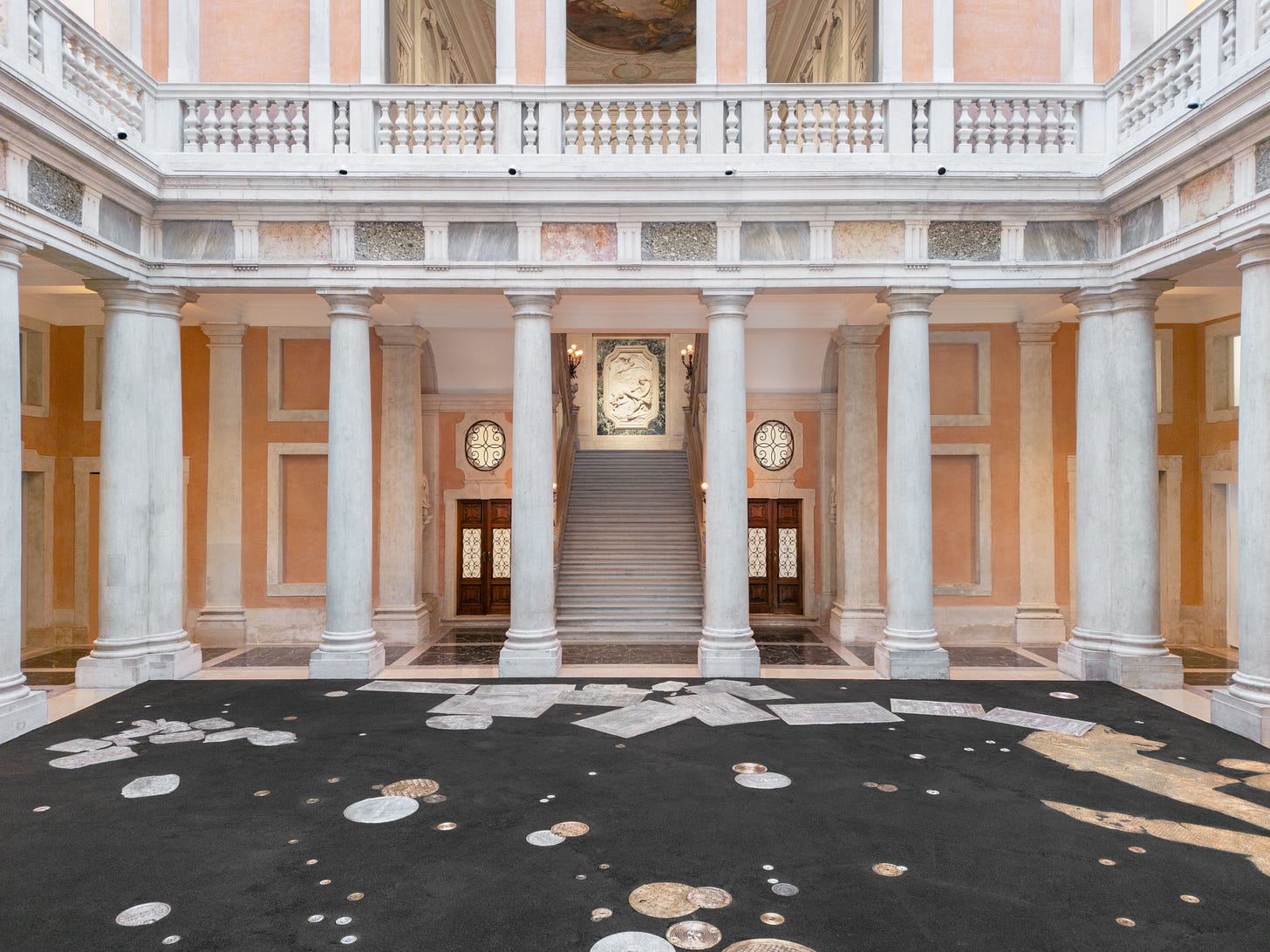
Damn, I’m being mean right off the bat. But let’s cut her some slack. The text explains that Tatiana thinks of this work as some type of cosmological map. I see the vision, it really does look like star constellations on a night sky. The text also offers a perspective on drain covers as portals into other worlds. Makes me think of Giselle in Enchanted (2007) when she falls into a magic fountain in her fairy tale world and ends up crawling out of a manhole on Times Square.
I get it, I see where Tatiana’s coming from with this. Visually, I like this work very much, don’t get me wrong. But Idk man, I can’t shake off that certain feeling of suspicion. I struggle getting over that too-perfect-to-be-true vibe. I have the same problem I had at the Troika show at Langen Foundation: I can only read most works within the context of this dope architecture. The building imposes itself onto my experience, unlike a white cube. Shows in such Billionaire-funded halls enter an aesthetic symbiosis: Look at how cool the space makes the art look. And look at how cool the art makes the space look. I don’t trust that.
Playing with Memory or Knock-Offs?
A keyword I read a lot in texts about Tatiana’s practice is memory. The story of her artistic development sounds interesting: One of her first larger projects, Bureau d’activités implicites (Bureau of Implicit Activities) (1997–2007), consisted of real and fake personal documents and resumes. An archival approach that she has kept until today.
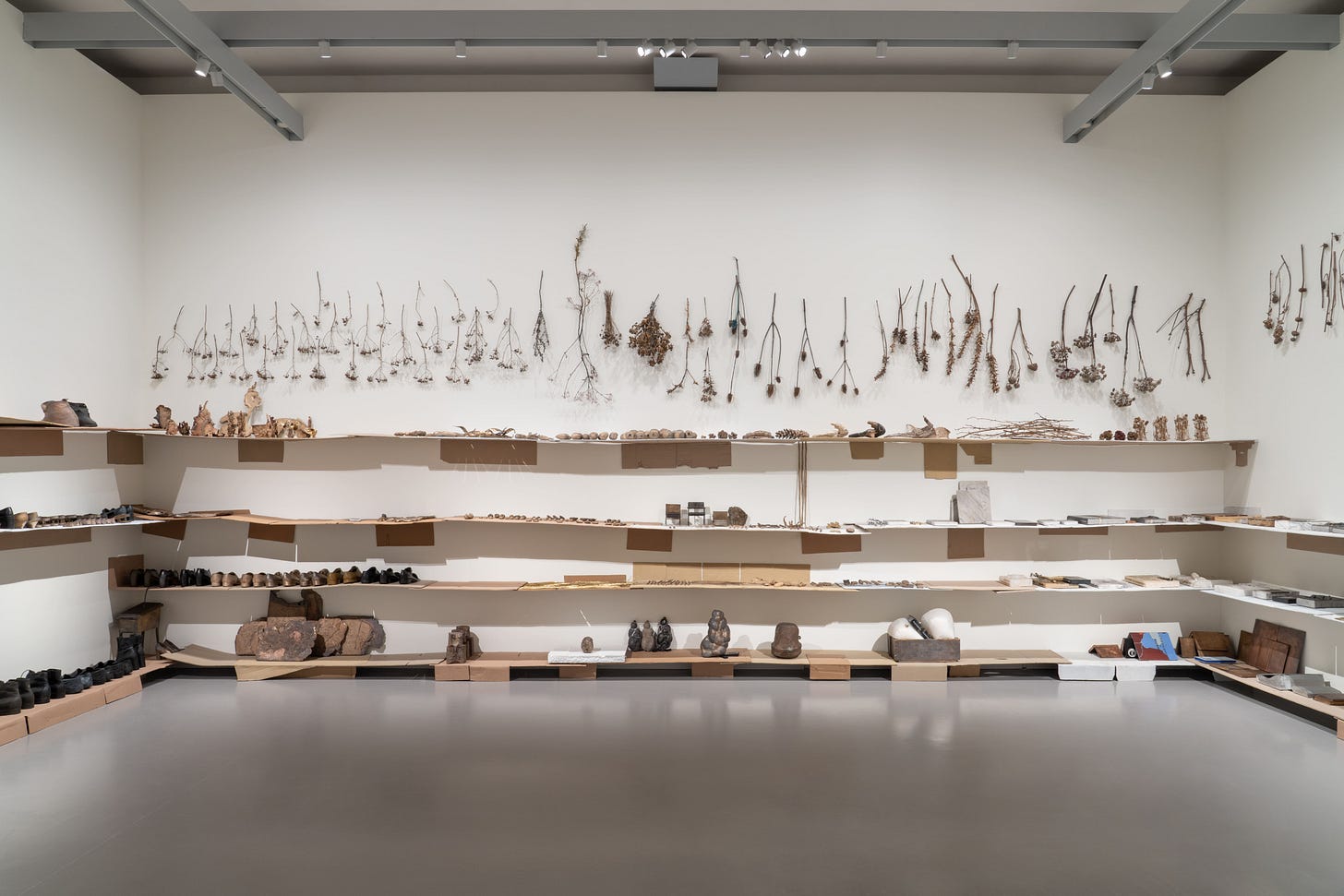
The series From March to May (2020) encompasses Tatiana’s drawings on 61 international newspaper front pages from the Covid lockdown. The pages are tinted in rusty reds, sepia, and cold blues. They look so film noir, as if all that madness happened decades and not just five years ago. It’s also an aesthetic that reminds me of Franz Burkhardt (Gen X, German). They both work with haunting imagery and layers of truth and fiction through imitation of vintage aesthetics.
A room on the third floor is designated for her inventory of things she reuses in her works. There’s boots, bags, spray cans, dried plants, books, tools, you name it. But it’s not actually those things. They’re all casts and marble. Barely anything (except for glass) is the actual material it pretends to be. Not even the vintage radio. Not even the fluffed rug. Not even the rusty chair with the filling falling out. It’s all aluminum, bronze, onyx, or marble. I get war flashbacks to the Is it cake or not? videos that infested social media in 2021. Technically? Impressive, very nice (in Patrick Bateman’s voice). But what else is there?
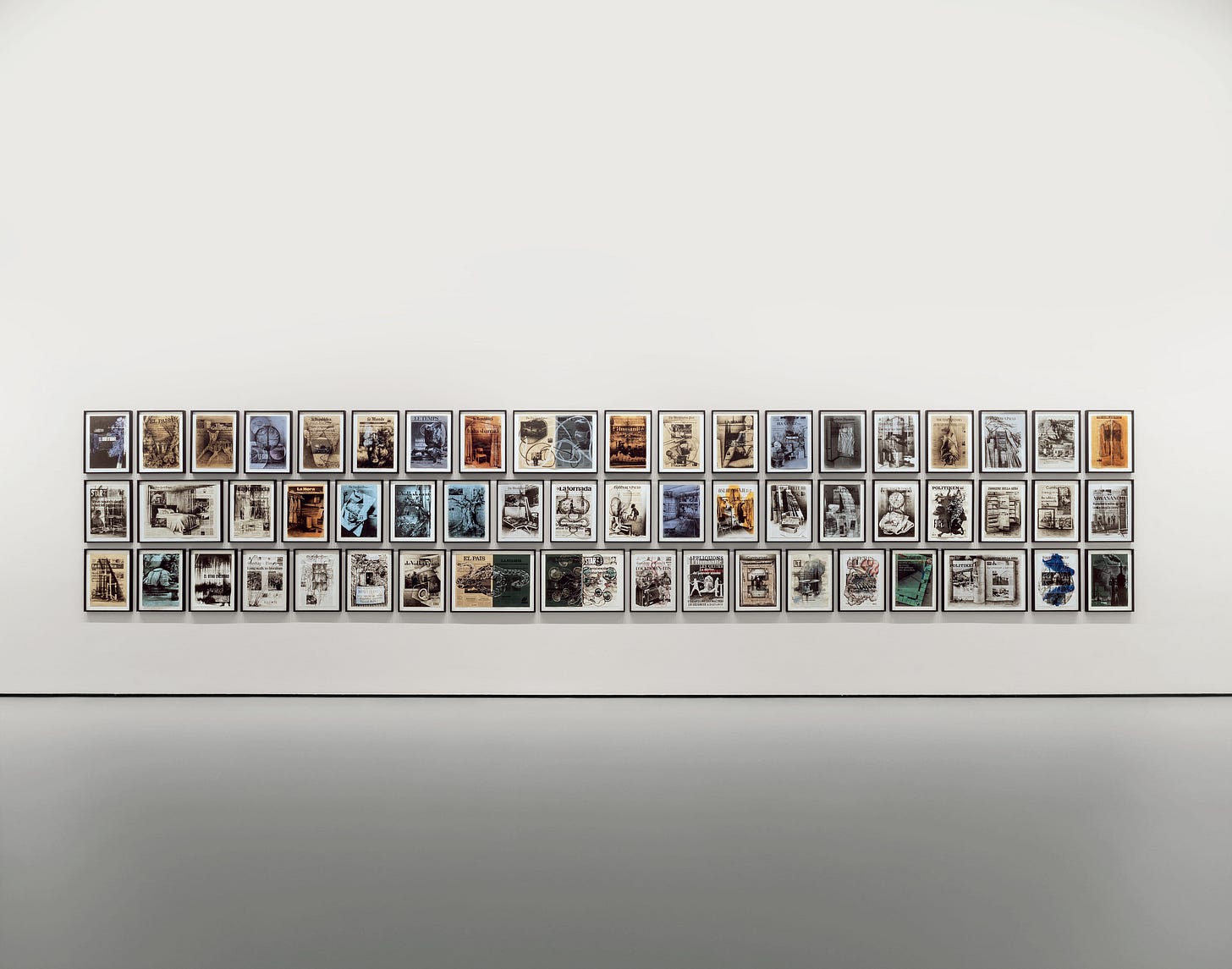
Respectfully, she started her sentence, knowing very well she’s about to say something very much disrespectful, but looking at her assemblages, all I see is a color-coded update of Arte Povera, Nouveau Realisme, and early Pop Art.
Her ongoing series The Guardians (2013 onwards) is always some chair/bench and objects combo. I couldn’t figure out what it reminded me of until I found Edward Kienholz’s (1927–1994, US-American) The Illegal Operation (1962). Not only do her fake cardboard Huts (2017-25) questionably play with precarious visuals of unhoused people, they also appear to be a reboot of Robert Rauschenberg’s (1925-2008, US-American) installations and cardboard assemblages — now in bronze. And there’s some half-earnest nod to climate catastrophe (according to the corresponding booklet text). Tatiana’s Notes on Sculpture (2022-25), a cast version of objects arranged as if in an artist’s studio, makes me think of an early Claes Oldenburg (1929-2022, US-American) mixed with some George Segal (1924-2000, US-American).
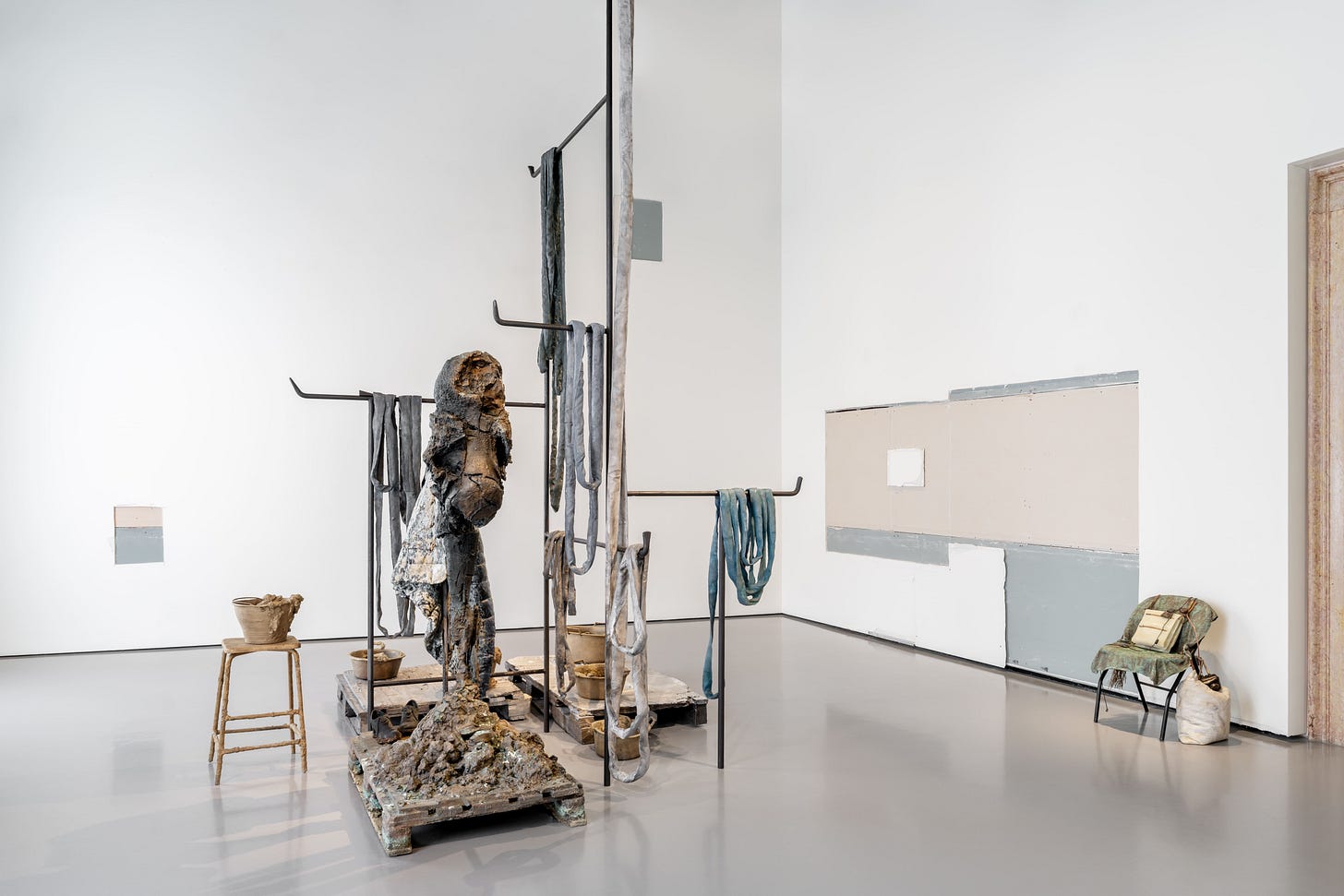
What exactly is Tatiana adding to that convo? Don’t get me wrong, there’s nothing wrong with an investigation of older aesthetics. I love Sarah Kürten’s (Millennial, German) work. But Sarah asks contemporary questions that cast shadows onto the past, and this is how her choices ultimately make sense. Yes, the aesthetics Sarah uses are pretty, but they are pretty with a purpose: They play with the romanticized pink vision of pretended luxury and naive nostalgia. Here, though?
Is Pretty Pretentious?
It’s the occasional allusion to societal struggles and protest that seems ingenuine: Storia Notturna, 30 giugno 2023 (2024) is a huge white plaster wall, textured and uneven, but sterilized compared to its context: In the exhibition booklet, I learn that Tatiana used impressions taken from streets in Montreuil. They were left in ruins after a riot broke out in response to the police shooting a Black teenager… M’am, are you sure that aesthetisizing Black trauma is your lane?

It seems to me as if precarious aesthetics are served on a shiny silver tray. Tatiana’s Sitting Sculptures (2024) layered in aluminum-cast and painted skin-and textile-appearing textures seem to be made by a version of Berlinde de Bruyckere (Baby Boomer, Belgian) who is obsessed with Architectural Digest. Even the holes in the walls — an artwork in itself — are color-coded, come on! I can’t help but think of everything as a pretty photoshoot backdrop. All I see is a potential multiple-page spread in Vogue.
I think Tatiana’s works are most powerful when she focuses on personal experience instead of shakily addressing societal upheaval. Her Cities (2024) series brings together cast objects she found in various cities around the world as delicate assemblages. For Venice, it’s a champagne cork, thistles, and a pressed soda can. For Tokyo, she chose a delicate tree branch and a handkerchief. And for Melbourne, feet, hands, gloves, and keys connect in a closed circle. Huh, that makes me think of John Baldessari (1931-2020, US-American)’s connected photographs now… But in the context of her series, working with bronze seems more than just a budget flex: It becomes an attempt at conserving those memories, even though its oxidation and unevenness suggest that decay is inevitable in any way.
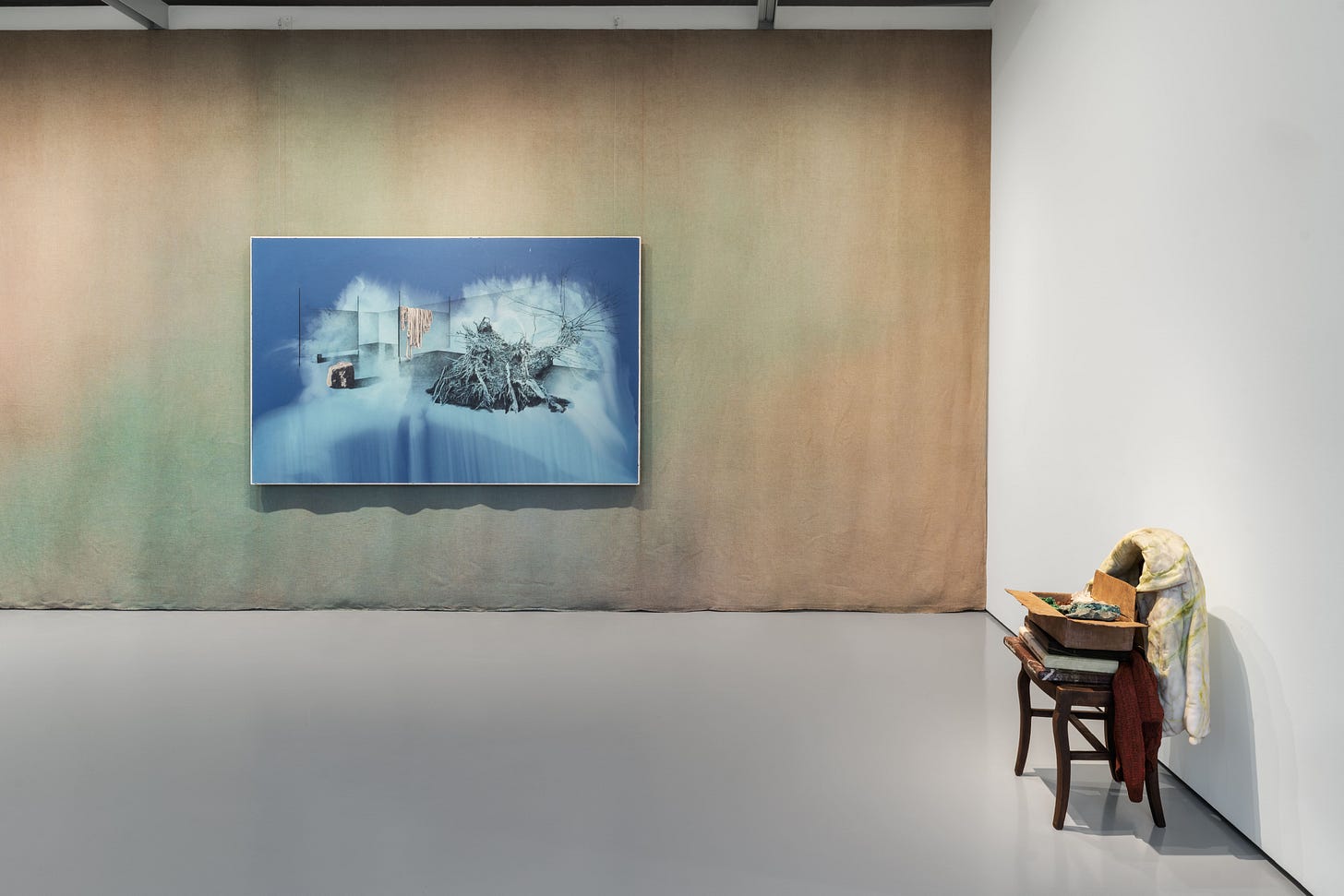
Tatiana’s drawings construct architectural forms and spaces and yet they feel disorienting: Ghostly color shifts in her Les dessouvenus (2013 onwards) series are the background for unsettling black and white visuals. And yes, here I agree with the booklet: These drawings do evoke a sense of uncertainty and instability. There is something about them that feels like a distant memory or a cryptic dream. An untitled work from 2017 from Tatiana’s Intranquillity (2005 onwards) series is drenched in turquoise and green. There’s two walls, but no building. Instead, they lead into a desert like a corridor. Portals to a ripped time space continuum seem to be layered on those walls, one layer connected through a beige spiral sucking me in. As a certified sleepwalker, I can say that this is a pretty accurate representation of what the state between slumber and half consciousness feels like.
Would I have treated the show differently if it were in a different institutional context? Probably. My issue is that this show makes just too much sense here. Of course, there’d be a show by Tatiana Trouvé at Pinault. Of course, they’d show an artist whose works are highly aesthetic. And of course, it fits perfectly that these works do, in some instances, point at social upheaval. It’s a show that makes you go wow, and then you read a label about a Black boy in France getting shot, and you go, oh well, that’s quite a tragedy, isn’t it? And then you go back to awe again. There’s no interest in building tension, in causing discomfort. If there’s any dissent, it’s kept like the luxury trend of 2024: Quiet.
Tatiana Trouvé: The Strange Life of Things, until January 4, 2026, at Palazzo Grassi, Venice.
Palazzo Grassi — Pinault Collection
Campo San Samuele 3231
Venice
Website
Instagram: @palazzo_grassi
Thanks for reading! Let me know what you think. And as always, I appreciate you subscribing and leaving a like. Thank you!
See you soon!!!
Jennifer
The Gen Z Art Critic




